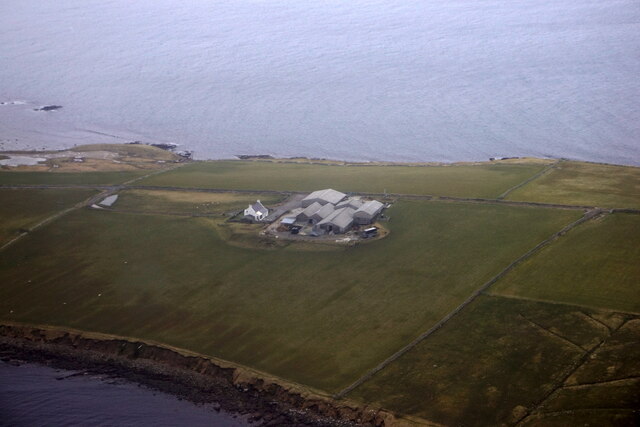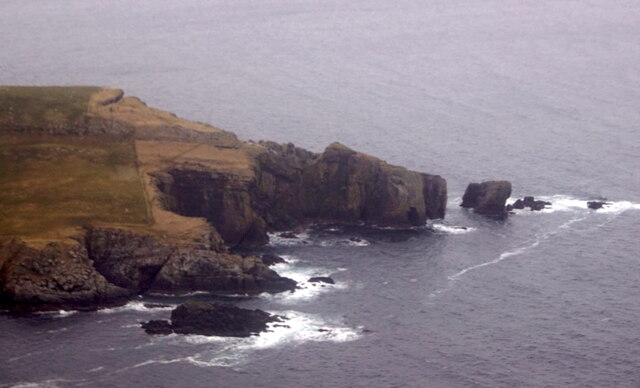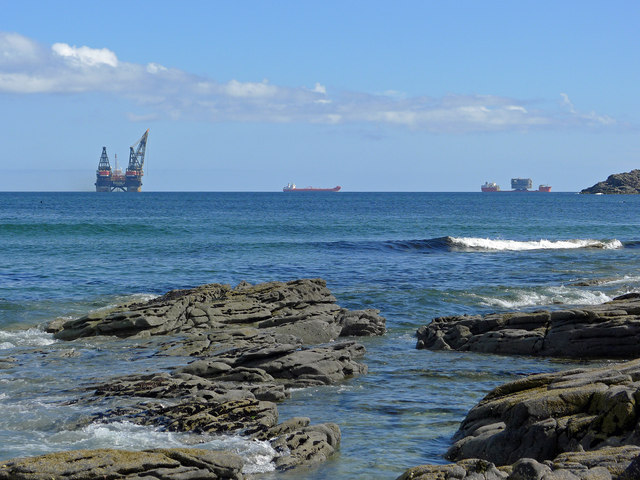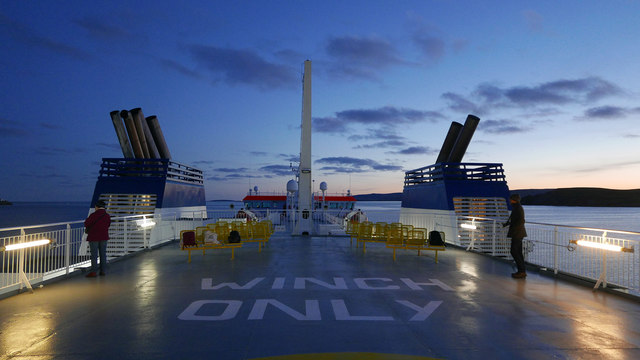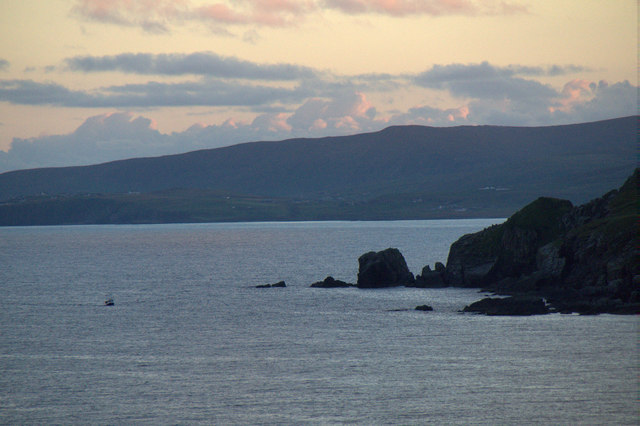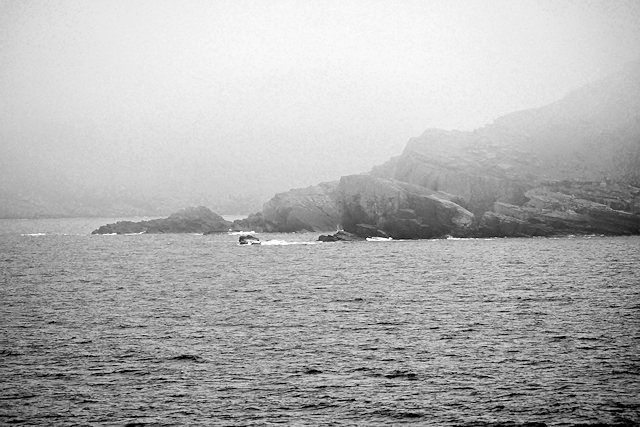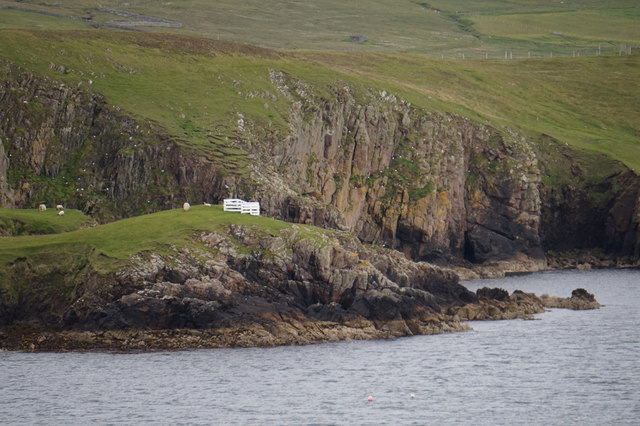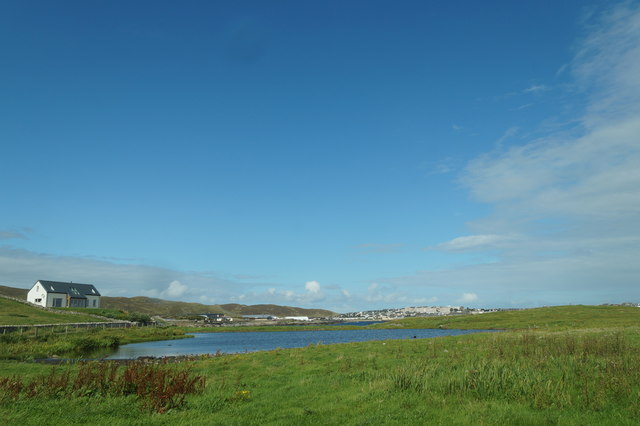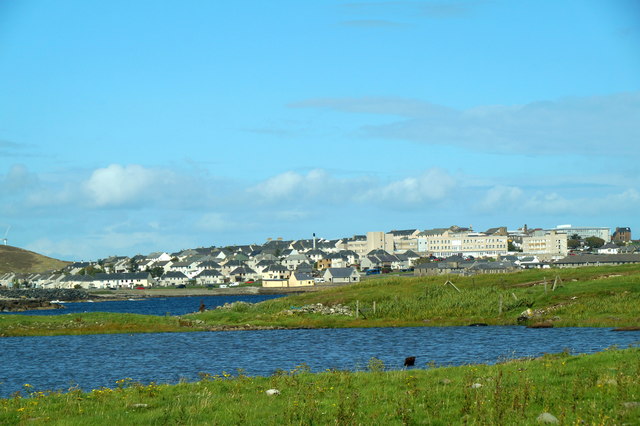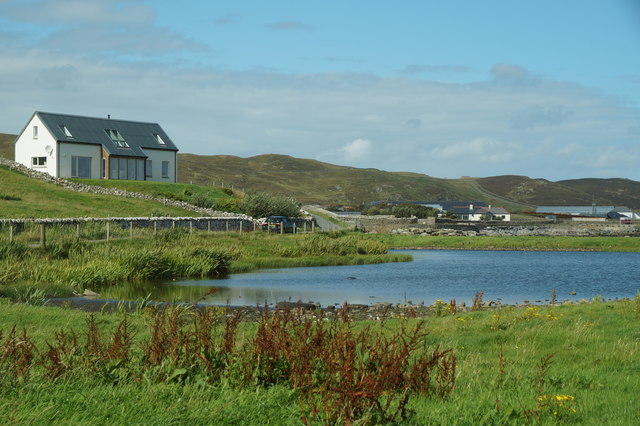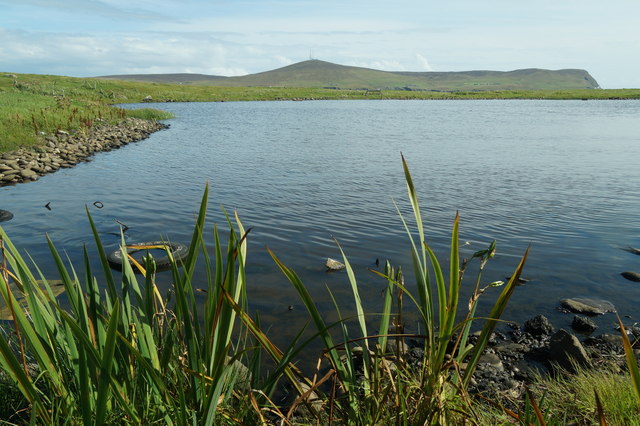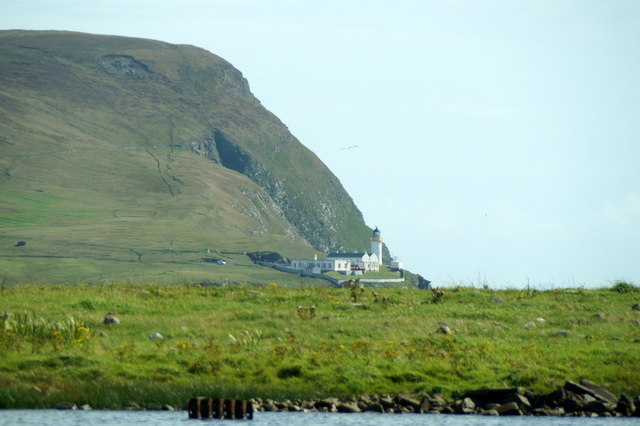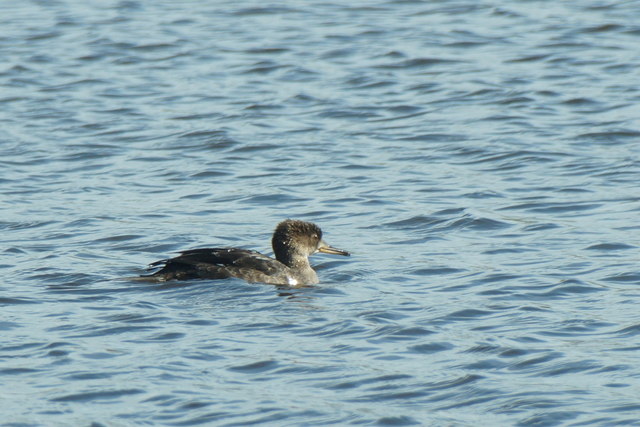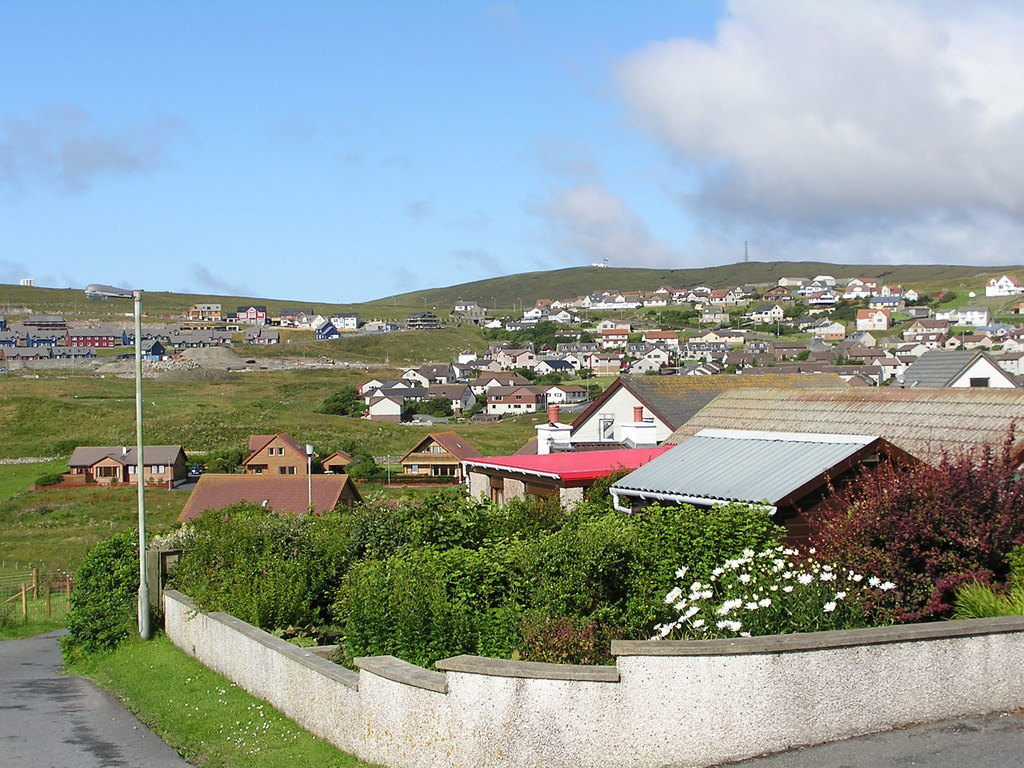Oxen Punds
Coastal Feature, Headland, Point in Shetland
Scotland
Oxen Punds
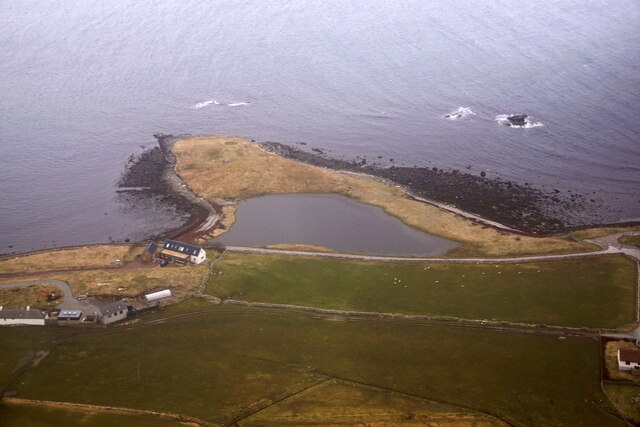
Oxen Punds is a prominent coastal feature located on the Shetland Islands, an archipelago in the North Atlantic Ocean. It is specifically situated on the Mainland, the largest island in the Shetland chain. Oxen Punds is categorized as a headland or point due to its distinct geographic formation and position along the coastline.
This coastal feature is known for its rugged and dramatic cliffs that can be observed from both land and sea. The cliffs at Oxen Punds are composed of ancient sedimentary rock layers, which have been shaped over centuries by the relentless force of the ocean waves. At its highest point, the headland reaches an elevation of approximately 150 meters (500 feet) above sea level, offering breathtaking panoramic views of the surrounding ocean and the neighboring islands.
The name "Oxen Punds" derives from the Old Norse language, with "oxen" referring to the large, powerful animals used in farming and "punds" meaning a pen or enclosure. It is believed that the name reflects the historical use of this area as a place for grazing livestock.
Today, Oxen Punds is a popular destination for hikers, nature enthusiasts, and photographers who are drawn to its striking scenery. The area is home to a rich array of wildlife, including seabird colonies nesting on the cliffs, seals basking on offshore rocks, and occasionally whales or dolphins passing by in the waters below.
Oxen Punds is not only a significant coastal feature in terms of its geological and ecological importance, but also holds cultural and historical value as a site that has been shaped by human activities and inhabited for centuries.
If you have any feedback on the listing, please let us know in the comments section below.
Oxen Punds Images
Images are sourced within 2km of 60.123709/-1.1715173 or Grid Reference HU4637. Thanks to Geograph Open Source API. All images are credited.
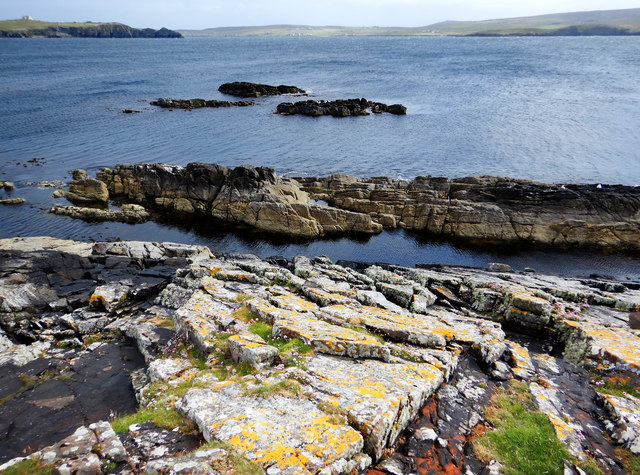
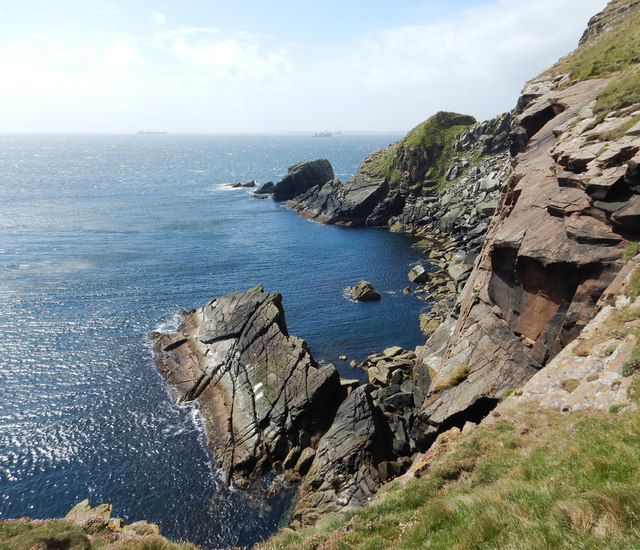
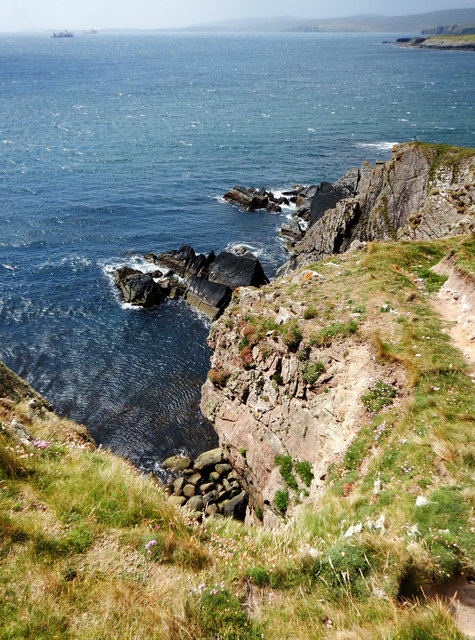
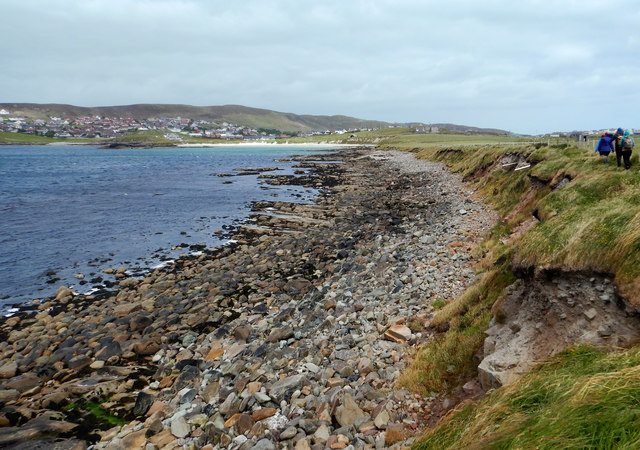
Oxen Punds is located at Grid Ref: HU4637 (Lat: 60.123709, Lng: -1.1715173)
Unitary Authority: Shetland Islands
Police Authority: Highlands and Islands
What 3 Words
///trams.victory.spreading. Near Lerwick, Shetland Islands
Nearby Locations
Related Wikis
Lerwick Observatory
Lerwick Observatory (also known as Lerwick Magnetic Observatory) is a British meteorological observatory located near the port at Lerwick, Shetland Islands...
Sound, Lerwick
Sound is an area situated to the south-west of central Lerwick, the capital of Shetland, Scotland.Sound is home to a primary school, public hall, and gospel...
Gulberwick
Gulberwick is a village on Mainland, 2.5 mi (4 km) southwest of Lerwick, Shetland, Scotland, which contains approximately 200 houses. In recent years the...
Brindister, South Mainland
Brindister is a village on South Mainland in Shetland, Scotland. Brindister is within the parish of Lerwick, and adjacent to the A970 south of Gulberwick...
Have you been to Oxen Punds?
Leave your review of Oxen Punds below (or comments, questions and feedback).
